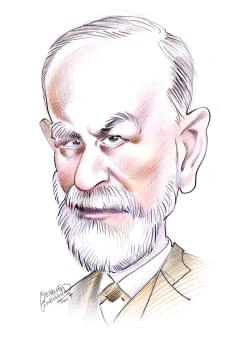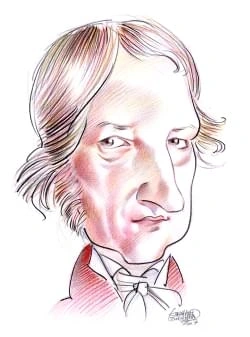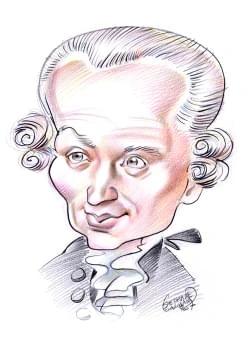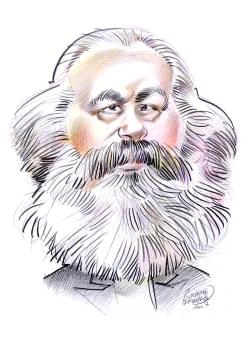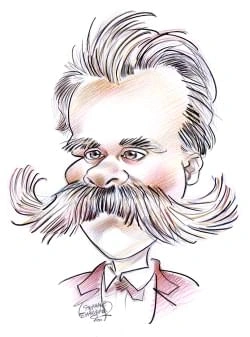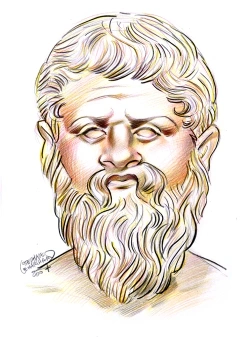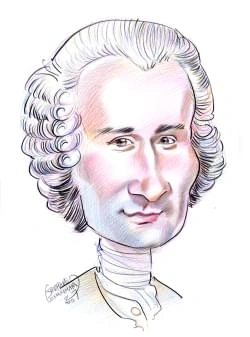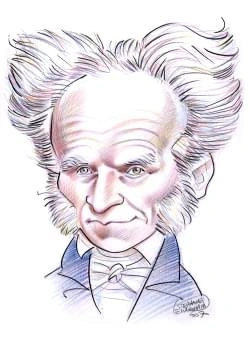212 résultats pour "gases"
-
Earth (planet).
Milky Way to complete one revolution around the Galaxy’s center. Earth’s axis of rotation is inclined (tilted) 23.5° relative to its plane of revolution around the Sun. This inclination of the axis creates the seasons and causes the height of the Sun in the sky at noon to increase and decrease as the seasons change. The Northern Hemisphere receives the most energy from the Sun when it is tiltedtoward the Sun. This orientation corresponds to summer in the Northern Hemisphere and winter in the S...
-
Earth (planet) - astronomy.
Milky Way to complete one revolution around the Galaxy’s center. Earth’s axis of rotation is inclined (tilted) 23.5° relative to its plane of revolution around the Sun. This inclination of the axis creates the seasons and causes the height of the Sun in the sky at noon to increase and decrease as the seasons change. The Northern Hemisphere receives the most energy from the Sun when it is tiltedtoward the Sun. This orientation corresponds to summer in the Northern Hemisphere and winter in the S...
-
Environment.
escape into space of the infrared energy radiated back out by Earth. This process is referred to as the greenhouse effect. These gases, primarily carbon dioxide,methane, nitrous oxide, and water vapor, insulate Earth’s surface, helping to maintain warm temperatures. Without these gases, Earth would be a frozen planet with anaverage temperature of about -18°C (about 0°F) instead of a comfortable 15°C (59°F). If the concentration of these gases rises, they trap more heat within theatmosphere, caus...
-
Clima - ciencias de la naturaleza.
2 CLIMATOLOGÍA Y ATMÓSFERA La climatología es una ciencia diferente a la meteorología, aunque se basa en sus análisis. La meteorología es la ciencia que estudia los fenómenos atmosféricos (viento,lluvia, aurora boreal, rayo...) y los mecanismos que producen el tiempo atmosférico actual; una de sus finalidades es elaborar pronósticos sobre el tiempo que hará en elfuturo. La climatología estudia la regularidad del tiempo, y se diferencia de la meteorología en que trabaja con datos medios en vez d...
-
Cometa (astronomía) - ciencia y tecnologia.
Cometa HalleyEl cometa Halley reaparece aproximadamente cada 76 años. Esta fotografía, tomada en Nueva Zelanda en 1986, muestra al cometadurante su aproximación al Sol más reciente. El cometa se hace visible porque la radiación solar vaporiza partes del núcleo de hielo,formando la cabellera y la cola del cometa.Barney Magrath/Science Source/Photo Researchers, Inc. A medida que un cometa se aproxima al Sol, la alta temperatura solar provoca la sublimación de los hielos, haciendo que el cometa bri...
- gazole o u gas-oil.
-
Nuclear Weapons.
Regardless of the method used to attain a supercritical assembly, the chain reaction proceeds for about a millionth of a second, liberating vast amounts of heat energy.The extremely fast release of a very large amount of energy in a relatively small volume causes the temperature to rise to tens of millions of degrees. The resultingrapid expansion and vaporization of the bomb material causes a powerful explosion. VI PRODUCTION OF FISSILE MATERIAL Much experimentation was necessary to make the p...
-
Átomo - ciencia y tecnologia.
de oxígeno será dos veces mayor puesto que el oxígeno es diatómico. 4 CARACTERÍSTICAS DEL ÁTOMO La curiosidad acerca del tamaño y masa del átomo atrajo a cientos de científicos durante un largo periodo en el que la falta de instrumentos y técnicas apropiadas impidióobtener respuestas satisfactorias. Posteriormente se diseñaron numerosos experimentos ingeniosos para determinar el tamaño y masa de los diferentes átomos. El átomomás ligero, el de hidrógeno, tiene un diámetro de aproximadamente 10...
-
-
Heat (physics)
I
INTRODUCTION
Heat Loss from a House
A thermograph shows the large amount of heat lost through a house's windows during winter.
Theoretically, the molecules of a substance would exhibit no activity at the temperature termed absolute zero. See Molecule. III TEMPERATURE SCALES Five different temperature scales are in use today: the Celsius scale, known also as the Centigrade scale, the Fahrenheit scale, the Kelvin scale, the Rankine scale, andthe international thermodynamic temperature scale ( see Thermometer). The Celsius scale, with a freezing point of 0° C and a boiling point of 100° C, is widely used throughout the...
-
Internal-Combustion Engine.
any Otto-cycle engine and in actual engines today is slightly more than 40 percent. Diesels are, in general, slow-speed engines with crankshaft speeds of 100 to 750revolutions per minute (rpm) as compared to 2500 to 5000 rpm for typical Otto-cycle engines. Some types of diesel, however, have speeds up to 2000 rpm. Becausediesels use compression ratios of 14 or more to 1, they are generally more heavily built than Otto-cycle engines, but this disadvantage is counterbalanced by theirgreater effici...
-
Infrared Space Observatory - astronomy.
know how often these disks occur around stars to help them understand how common it is for planets to form. ISO found several previously unknown stars with disks.ISO also detected olivine, a silicate mineral found in Earth’s own rocky mantle, in the comet Hale-Bopp, which was visible from Earth in 1996 and 1997. The discovery ofolivine in the comet suggests that the comet and Earth have a similar origin. The satellite also detected the first evidence of water outside of the solar system inplanet...
-
Star (astronomy) - astronomy.
absorbing the missing colors of light. For example, the set of dark lines made by hydrogen includes a dark red line, the set of dark lines made by sodium includes a pairof dark yellow lines, and the set of dark lines made by iron includes lines of nearly every color. Each element in the gaseous outer layer of a star produces its ownparticular pattern of dark spectrum lines, depending on the temperature and pressure of the gas. Astronomers have observed spectrum lines, or spectra, for hundredsof...
-
Molecule - chemistry.
attracted to the negatively charged electrons between them. The electrons belong to the molecule as a whole. However, each hydrogen atom now has a complete outershell of two electrons. The formula H 2 describes a hydrogen molecule, a discrete unit. When a molecule contains just two atoms, such as the hydrogen molecule does, it is called a diatomic molecule. Some atoms can form covalent bonds with more than one other atom and thus create a larger molecule. Atoms form molecules with covalent bo...
-
Gemstones.
In the late 1960s a method was developed for “growing” diamonds by heating a diamond particle to a high temperature and subjecting it to methane gas. The gasdecomposes into carbon atoms, which adhere to the diamond crystal. The crystal structure of the enlarged diamond is identical to that of a natural diamond. Diamondsof about 1 carat (200 mg or 0.007 oz) have been produced by this method, but their cost is still considerably higher than that of naturally occurring diamonds. Sapphires are made...
-
Ocean and Oceanography.
of sediment. When studied in sedimentary core samples, which can represent many millions of years of deposits, they provide a detailed and continuous history of theearth’s environmental changes. The record is particularly informative for the most recent 2 million to 5 million years, during which major fluctuations in global climatehave occurred. Successive ice ages can be traced by the relative scarcity or abundance of the shells of warm-water and cold-water diatoms in various layers of asedimen...
-
Ocean and Oceanography - Geography.
of sediment. When studied in sedimentary core samples, which can represent many millions of years of deposits, they provide a detailed and continuous history of theearth’s environmental changes. The record is particularly informative for the most recent 2 million to 5 million years, during which major fluctuations in global climatehave occurred. Successive ice ages can be traced by the relative scarcity or abundance of the shells of warm-water and cold-water diatoms in various layers of asedimen...
-
-
Alaska - geography.
depression surrounded by highlands and have the coldest winter and hottest summer temperatures in Alaska. Once the Kuskokwim River passes through theKuskokwim Mountains, it forms the southern edge of a vast lake-studded alluvial plain bounded on the north by the Yukon River. This water-logged lowland is a majorsummer nesting area for birds. Fairbanks is the major city in this region, while Fort Yukon is the major community in the Yukon Flats and Bethel the largest settlementon the Lower Kuskokwi...
-
Alaska - USA History.
depression surrounded by highlands and have the coldest winter and hottest summer temperatures in Alaska. Once the Kuskokwim River passes through theKuskokwim Mountains, it forms the southern edge of a vast lake-studded alluvial plain bounded on the north by the Yukon River. This water-logged lowland is a majorsummer nesting area for birds. Fairbanks is the major city in this region, while Fort Yukon is the major community in the Yukon Flats and Bethel the largest settlementon the Lower Kuskokwi...
-
Pollution.
One of the greatest challenges caused by air pollution is global warming, an increase in Earth’s temperature due to the buildup of certain atmospheric gases such ascarbon dioxide. With the heavy use of fossil fuels in the 20th century, atmospheric concentrations of carbon dioxide have risen dramatically. Carbon dioxide and othergases, known as greenhouse gases, reduce the escape of heat from the planet without blocking radiation coming from the Sun. Because of this greenhouse effect,average glob...
-
Saskatchewan (province) - Geography.
The length of the frost-free season varies within the province. In the southwest, particularly in the valley lands along the South Saskatchewan River, the frost-freeperiod ranges from 150 to 160 days. Regina enjoys about 123 frost-free days, and Saskatoon has about 111. The far north has only from 85 to 95 frost-free days. One important characteristic of Saskatchewan’s climate is the great variability in temperature and precipitation from year to year, which is often critical for agriculture.The...
-
Saskatchewan (province) - Canadian History.
The length of the frost-free season varies within the province. In the southwest, particularly in the valley lands along the South Saskatchewan River, the frost-freeperiod ranges from 150 to 160 days. Regina enjoys about 123 frost-free days, and Saskatoon has about 111. The far north has only from 85 to 95 frost-free days. One important characteristic of Saskatchewan’s climate is the great variability in temperature and precipitation from year to year, which is often critical for agriculture.The...
-
Vulkanismus - geographie.
6 OBERFLÄCHENVULKANISMUS Kontinentaler Vulkanismus hat zwar einen wesentlich geringeren Umfang als submariner Vulkanismus, was das Volumen des Magmas betrifft, aber er ist aufgrund derleichteren Zugänglichkeit sehr viel besser erforscht. Es ist seit historischen Zeiten bekannt, dass Vulkanausbrüche sowohl durch gewaltige Ascheexplosionen als auch durchruhig fließende Lavaströme gekennzeichnet sein können. 6.1 Spalteneruptionen Spalteneruptionen gibt es nicht nur entlang der Mittelozeanischen R...
-
Isotope - chemistry.
depends on the fact that when water undergoes electrolysis, the lighter hydrogen isotope tends to come off first, leaving behind a residue of water that is enriched inthe heavier isotope. D Gaseous Diffusion This and the electromagnetic method of separating isotopes of uranium afforded the first large-scale separation ever achieved. The problem of separating uranium-235from uranium-238 arose in 1940 after the demonstration of the susceptibility of the 235 isotope to fission by neutrons. Uranium...
-
Venus (planet) - astronomy.
level winds circle the planet at 360 km/h (225 mph), making a complete rotation in only four days. These winds are said to super-rotate because they travel muchfaster than the rotation of the planet itself. These high-speed winds cover the planet completely, blowing toward the west at virtually every latitude from equator topole. The motions of descending probes, however, have shown that the bulk of Venus’s tremendously dense atmosphere, closer to the planet’s surface, is almoststagnant. From th...
-
- DEGAS, Hilaire Germain Edgar de Gas, dit Edgar (1834-1917) Peintre et sculpteur, il représente les spectacles, la danse, les femmes au travail (les Repasseuses, 1882) et les maisons closes.
-
TP1. Détermination du point éclair et la température d’inflammabilité du gas-oil
TP1. Détermination du point éclair et la température d’inflammabilité du gas-oil 1. Généralités + + + + + + + 1 Le point d’éclair d’un liquide inflammable est la température minimale à partir de laquelle le liquide émet suffisamment de vapeurs pour former, avec l’air ambiant, un mélange gazeux inflammable à la pression atmosphérique. Il existe diverses méthodes de détermination du point d’éclair et chacun étend à donner des résultats légèrement différents. Les deux méthodes...
-
Clima - geografía.
2 CLIMATOLOGÍA Y ATMÓSFERA La climatología es una ciencia diferente a la meteorología, aunque se basa en sus análisis. La meteorología es la ciencia que estudia los fenómenos atmosféricos (viento,lluvia, aurora boreal, rayo...) y los mecanismos que producen el tiempo atmosférico actual; una de sus finalidades es elaborar pronósticos sobre el tiempo que hará en elfuturo. La climatología estudia la regularidad del tiempo, y se diferencia de la meteorología en que trabaja con datos medios en vez d...
-
Clima - geografía.
2 CLIMATOLOGÍA Y ATMÓSFERA La climatología es una ciencia diferente a la meteorología, aunque se basa en sus análisis. La meteorología es la ciencia que estudia los fenómenos atmosféricos (viento,lluvia, aurora boreal, rayo...) y los mecanismos que producen el tiempo atmosférico actual; una de sus finalidades es elaborar pronósticos sobre el tiempo que hará en elfuturo. La climatología estudia la regularidad del tiempo, y se diferencia de la meteorología en que trabaja con datos medios en vez d...
-
Clima - ciencias de la naturaleza.
2 CLIMATOLOGÍA Y ATMÓSFERA La climatología es una ciencia diferente a la meteorología, aunque se basa en sus análisis. La meteorología es la ciencia que estudia los fenómenos atmosféricos (viento,lluvia, aurora boreal, rayo...) y los mecanismos que producen el tiempo atmosférico actual; una de sus finalidades es elaborar pronósticos sobre el tiempo que hará en elfuturo. La climatología estudia la regularidad del tiempo, y se diferencia de la meteorología en que trabaja con datos medios en vez d...
-
Tauchen
1
EINLEITUNG
Tauchen, Aufenthalt Luft atmender Organismen oder spezialisierter Geräte unter Wasser.
Kreislaufgeräten, bei denen das ausgeatmete Gas in einer Atemkalkpatrone von Kohlendioxid befreit und wieder dem Atemkreislauf zugeführt wird. Die Verwendung reinenSauerstoffs ermöglicht blasenfreies Tauchen bis durchschnittlich sieben Meter Tiefe, andere Gemische wie Nitrox oder Heliox zirkulieren vor allem in so genannten halbgeschlossenen Kreislaufgeräten. Die Motivation für das Gerätetauchen liegt heute neben der sportlichen Freizeitgestaltung in verschiedenen beruflichen Arbeitsfeldern begr...
-
Erde - Astronomie.
5 ALTER UND URSPRUNG DER ERDE Radiometrische Bestimmungen lassen das Alter der Erde auf 4,65 Milliarden Jahre schätzen ( siehe Altersbestimmung, Verfahren zur; geologische Zeitrechnung). Obwohl die ältesten Gesteine auf der Erde nicht ganz vier Milliarden Jahre alt sind, liefern Meteoriten, die geologisch dem Erdkern entsprechen, Altersangaben von etwa4,5 Milliarden Jahren. Die Kristallisation des Erdkernes und der ursprünglichen Teile von Meteoriten hat schätzungsweise zur gleichen Zeit, etw...
-
Erde - geographie.
5 ALTER UND URSPRUNG DER ERDE Radiometrische Bestimmungen lassen das Alter der Erde auf 4,65 Milliarden Jahre schätzen ( siehe Altersbestimmung, Verfahren zur; geologische Zeitrechnung). Obwohl die ältesten Gesteine auf der Erde nicht ganz vier Milliarden Jahre alt sind, liefern Meteoriten, die geologisch dem Erdkern entsprechen, Altersangaben von etwa4,5 Milliarden Jahren. Die Kristallisation des Erdkernes und der ursprünglichen Teile von Meteoriten hat schätzungsweise zur gleichen Zeit, etw...
-
-
México (república) - geografía.
Las llanuras costeras son en su generalidad zonas bajas, llanas y compuestas por materiales arenosos, aunque en las costas del Pacífico ocasionalmente son interrumpidaspor pequeñas serranías. Baja California, península larga y estrecha que se extiende a lo largo de 1.200 km al sur del límite noroeste del país, está atravesada por la sierrade la Baja California, continuación de la cadena costera del Pacífico, en Estados Unidos, que constituye el sistema surcaliforniano. La península de Yucatán, q...
-
Natural Satellite - astronomy.
Titan, Saturn’s largest moon, also has few impact craters. Although icy volcanism from water and ammonia may occur along with some tectonic activity, Titan’s youngsurface is most likely the result of weather processes. Titan’s dense, cold atmosphere precipitates particles of complex organic molecules that accumulate as dunes andmountains. Methane rain erodes the surface and creates lakes at the moon’s poles. Triton’s young surface also may result from processes in its atmosphere, as well aserupt...
-
Medio ambiente - ciencias de la naturaleza.
aproximadamente. Lo significativo de este cambio es que puede provocar un aumento de la temperatura de la Tierra a través del proceso conocido como efecto invernadero.El dióxido de carbono atmosférico tiende a impedir que la radiación de onda larga escape al espacio exterior; dado que se produce más calor y puede escapar menos, latemperatura global de la Tierra aumenta. Un calentamiento global significativo de la atmósfera tendría graves efectos sobre el medio ambiente. Aceleraría la fusión de l...
-
Globale Erwärmung - geographie.
5.1 Treibhausgase Als Faktoren spielen dabei bestimmte Gase, die so genannten Treibhausgase, die Hauptrolle: neben Wasserdampf vor allem Kohlendioxid, Methan, Distickstoffoxid,bodennahes Ozon sowie die Fluorchlorkohlenwasserstoffe (FCKW). Letztere kommen als Industrieprodukte nicht von Natur aus in der Atmosphäre vor. Diese Gase haben einsehr unterschiedliches Treibhauspotential; Methan hat eine etwa 20-mal, Distickstoffoxid eine rund 200-mal und die Fluorchlorkohlenwasserstoffe sogar eine bis...
- A member of the European Union, the Netherlands are the leading country for producing and exporting natural gas in Europe.
- The discovery in 1966 of large deposits of natural gas and oil in the North Sea has enabled Norway to sustain a good level of growth despite successive falls in the price of Crude.
-
Química física - ciencia y tecnologia.
cinética química busca la relación entre la forma precisa en que varía la velocidad de reacción con el tiempo, y la naturaleza de las colisiones intermoleculares (quecontrolan la velocidad) implicadas en la generación de los productos de reacción. La mayoría de las reacciones implican una serie de procesos etapa a etapa, cuya sumacorresponde a las proporciones (o estequiometría) en que se combinan los reactivos y se forman los productos. Sin embargo, sólo una de ellas es generalmente la etapadet...
-
Verbrennungskraftmaschine - Technik.
4 ARBEITSWEISE VON OTTOMOTOREN Funktionsweise eines Viertakt-HubkolbenmotorsDiese zum Teil animierte Illustration zeigt stark vereinfacht am Beispiel des Benzin- oder Ottomotors die Funktionsweise einesHubkolbenmotors nach dem Viertaktprinzip. Dieselmotoren funktionieren ähnlich, aber sie benötigen z. B. keine Zündkerzen, weil derDieselkraftstoff sich ab einer bestimmten Verdichtung von selbst entzündet.© Microsoft Corporation. Alle Rechte vorbehalten. Ottomotoren durchlaufen bei Betrieb sich p...
-
-
Meteorology.
to find the corresponding relative humidity and dew-point temperature. III SPECIAL METEOROLOGICAL INSTRUMENTS Meteorologists have developed several sophisticated instruments that measure multiple physical characteristics of the air simultaneously and at more than one location.The most important of these special instruments are radiosondes, Doppler radar, and weather satellites. A Radiosonde A radiosonde measures air temperature, air pressure, and humidity from the earth’s surface up to an alt...
-
Supernova - astronomy.
The term hypernova has been proposed for an extremely massive core-collapse supernova—possibly more than 100 times the mass of the Sun. A hypernova is thought to form a black hole. Just before it explodes, a hypernova may release a huge burst of gamma rays in a jet from the rotating black hole at its center. These jets mayexplain the so-called long gamma-ray bursts detected by astronomers. According to some researchers, massive stars with over 40 solar masses may sometimescollapse directly int...
-
Astronomy - astronomy.
Telescopes may use either lenses or mirrors to gather visible light, permitting direct observation or photographic recording of distant objects. Those that use lenses arecalled refracting telescopes, since they use the property of refraction, or bending, of light ( see Optics: Reflection and Refraction ). The largest refracting telescope is the 40-in (1-m) telescope at the Yerkes Observatory in Williams Bay, Wisconsin, founded in the late 19th century. Lenses bend different colors of light by d...
-
Laser.
their atoms into laser light. Consequently, they are the most powerful continuous wave (CW) lasers—that is, lasers that emit light continuously rather than in pulses. C Liquid Lasers The most common liquid laser media are inorganic dyes contained in glass vessels. They are pumped by intense flash lamps in a pulse mode or by a separate gas laserin the continuous wave mode. Some dye lasers are tunable, meaning that the color of the laser light they emit can be adjusted with the help of a prism lo...
-
Pierre Elliott Trudeau.
IV PRIME MINISTER After the resignation of Lester Pearson as leader of the Liberal Party, Trudeau was chosen as his successor, and on April 20, 1968, he became prime minister. He calleda general election and showed himself to be a brilliant campaigner, projecting an image of youthful charm and vitality. He argued for a united Canada with equal rightsfor French- and English-speaking citizens and opposed special status for any province. The voters gave him a substantial majority over Robert Stan...
-
Pierre Elliott Trudeau - Canadian History.
IV PRIME MINISTER After the resignation of Lester Pearson as leader of the Liberal Party, Trudeau was chosen as his successor, and on April 20, 1968, he became prime minister. He calleda general election and showed himself to be a brilliant campaigner, projecting an image of youthful charm and vitality. He argued for a united Canada with equal rightsfor French- and English-speaking citizens and opposed special status for any province. The voters gave him a substantial majority over Robert Stan...
-
Aerospace Medicine - astronomy.
medically as aeroembolism and popularly as the bends, leads to confusion, paralysis, or neurocirculatory collapse. The most characteristic symptoms of the bends arepain in the large joints resulting from pressure of the gas on tendons and nerves, together with spasm of the blood vessels. Preflight inhalation of pure oxygen toeliminate nitrogen from the system has proved valuable as a preventive measure. Rapid decompression, resulting from accidental failure at high altitudes of thepressure withi...
-
Plant - biology.
B1 Vacuoles Vacuoles are membrane-bound cavities filled with cell sap, which is made up mostly of water containing various dissolved sugars, salts, and other chemicals. B2 Plastids Plastids are types of organelles, structures that carry out specialized functions in the cell. Three kinds of plastids are important here. Chloroplasts contain chlorophyllsand carotenoid pigments; they are the site of photosynthesis, the process in which light energy from the sun is fixed as chemical energy in the b...
-
-
Space Shuttle - astronomy.
The two SRBs, with their combined thrust of some 26 million newtons (about 5.8 million lb), provide most of the power for the first two minutes of flight. The SRBs takethe space shuttle to an altitude of 45 km (28 mi) and a speed of 4,973 km/h (3,094 mph) before they separate and fall back into the ocean to be retrieved,refurbished, and prepared for another flight. After the boosters fall away, the three main engines continue to provide thrust. These engines are clustered at the rear end of the...
-
Saudi Arabia - country.
C Natural Resources Some of the world’s largest oil and natural gas fields lie beneath Saudi Arabia and its offshore waters, representing the country’s most economically important naturalresource. In 2007 Saudi Arabia’s oil reserves were estimated at 264 billion barrels. Before the discovery and exploitation of these reserves in the mid-20th century,Saudi Arabia was one of the poorest countries in the world. Its relatively small population subsisted in a harsh environment with little agricultur...
}})
